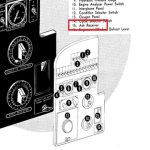I cannot imagine a more hellish environment in which to fight a war! Two years stationed at CFB Churchill convinced me of that.
My late father-in-law was a Panzer Grenadier lucky enough to escape Stalingrad before the complete encirclement, only to be captured and sent to Siberia. The vehicle that got him out was the Kubelwagon. He came back in 1951, broken in health and spirit.
My late father-in-law was a Panzer Grenadier lucky enough to escape Stalingrad before the complete encirclement, only to be captured and sent to Siberia. The vehicle that got him out was the Kubelwagon. He came back in 1951, broken in health and spirit.






















































































